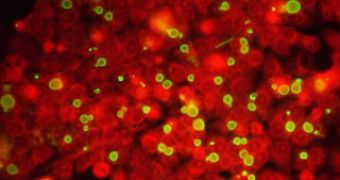I'm sure you're quite well informed on many aspects related to HIV, syphilis or gonorrhea, but the STD you're more likely to experience is Chlamydia, the "Silent Epidemic" (called so because in women it may not induce any symptoms and will linger for months or years before being diagnosed). In men, Chlamydia can sometimes induce abnormal discharge from the penis and swelling of the testicles, but it is silent in most subjects.
The bacterium Chlamydia trachomatis infects about 930,000 Americans, an underestimation, as most of the infected people are not even aware of this and the real number could be of 2.8 million in US (the second most spread STD, gonorrhea, registers just about 360,000 cases in the US). About 2 % of the people under the age of 40 are infected.
Chlamydia causes severe DNA damage in sperm, translated into male infertility, up to 3 times over the normal percentage of sperm DNA break down.
Still, the right antibiotic treatment was found to retrieve the sperm DNA integrity and male fertility. Until recently, only women were believed to be possible subjects to Chlamydia-induced sterility. The bacteria blocks or hurts the fallopian tubes, making them improper for allowing the egg's movement.
A 2004 Swedish research detected lowered fertility in men infected with Chlamydia. To discover the cause, the team led by Jos? Luis Fern?ndez, of the Juan Canalejo University Hospital in La Coruna, Spain, focused on the sperm of 143 men infected with both Chlamydia and Mycoplasma, another STD bacterium.
35% of the sperm from Chlamydia infected men presented DNA break down, while in the case of healthy subjects, this percent was of only 11%. The Chlamydia infection also induced increased levels of malformed and immobile sperm, compared to that of healthy subjects.
The team found that the antibiotic treatment against Chlamydia infection can significantly boost sperm quality: in these couples, just 13% achieved pregnancy at the beginning of the treatment, while the number boomed to 86% after completing the prescribed antibiotic treatment.

 14 DAY TRIAL //
14 DAY TRIAL //